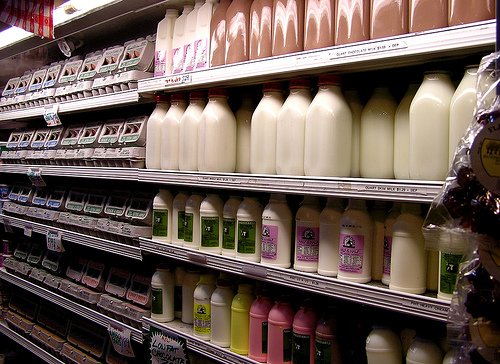 The book, Return to Order: From a Frenzied Economy to an Organic Christian Society—Where We’ve Been, How We Got Here, and Where We Need to Go, criticizes the mass standardization of products by claiming it tends to sacrifice quality and taste for a rough equivalent. This leads to mass markets and bland products.
The book, Return to Order: From a Frenzied Economy to an Organic Christian Society—Where We’ve Been, How We Got Here, and Where We Need to Go, criticizes the mass standardization of products by claiming it tends to sacrifice quality and taste for a rough equivalent. This leads to mass markets and bland products.
Sometimes a good concrete example does more to illustrate a point more than a thousand words of pure theory. A recent report in The New York Times highlighted one such example of the problems associated with mass standardization. The article deals with … buttermilk.
Buttermilk is that liquid that remains after churning butter. This creamy and naturally cultured byproduct was long a popular beverage in rural America not unlike that of a yoghurt drink. In the South, buttermilk over crumbled corn bread was a supper classic. It is still used in cooking of biscuits, pancakes and dressings…or at least most think it is still used.
What many people do not realize is that commercial buttermilk is not really buttermilk. It is a standardized rough equivalent. Instead of rich cream, most diaries now use low-fat milk, skim milk or some other low-grade diary byproducts which is then fermented with cultures making it acidic. It is later thickened with carrageenan (a seaweed extract) or locust bean gum to make an over-thickened sour product marketed as “buttermilk.”
Authentic buttermilk is completely different. It is a light, tart and rich defatted milk with a slight taste of real butter. In times past, the buttermilk of each dairy would vary ever so slightly in taste depending on the breed of cow, feed and fermenting culture. Its extensive use in cooking and as a tangy yet refreshing beverage made it a staple of the American diet.
 Needless to say, there is a world of difference between this creamy buttermilk and the commercial version that goes by the same name. The tragedy of it all is that this cheap and tasty treat used to be available to everyone before its mass standardization. Today, the simple pleasure of enjoying real buttermilk is practically lost, and our culture is impoverished as a result.
Needless to say, there is a world of difference between this creamy buttermilk and the commercial version that goes by the same name. The tragedy of it all is that this cheap and tasty treat used to be available to everyone before its mass standardization. Today, the simple pleasure of enjoying real buttermilk is practically lost, and our culture is impoverished as a result.
There is however a healthy reaction to standardized buttermilk. The New York Times reports that some Americans are rediscovering the tangy taste of genuine buttermilk. Small specialized dairies are starting to produce and market the real thing. Restaurant owners and chefs are using real buttermilk to give zest and great taste to their menus. While these efforts are to be applauded, they do not address the central issue of a return to a whole culture that gives value to these simple yet nonstandardized things.
Return to Order is about this preferential option for quality and authenticity. We state that in the mass standardization that characterizes so much of today’s production, we have lost something as important as the cream that once was used to make real buttermilk. In our mad rush to expand production and maximize efficiency, we have taken out something of the soul of products. Sour equivalents have been put in their place to such an extent that many do not even realize what we have lost. That is why we affirm that we have adulterated our products and our culture and we now need to recover the authentic soul of both.


